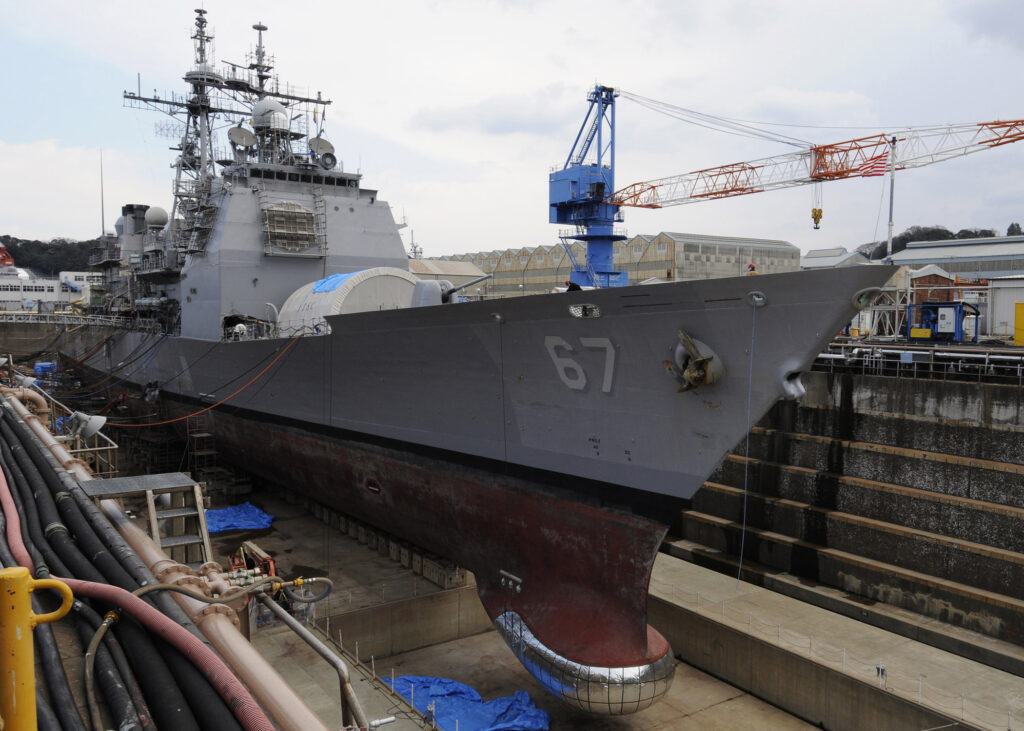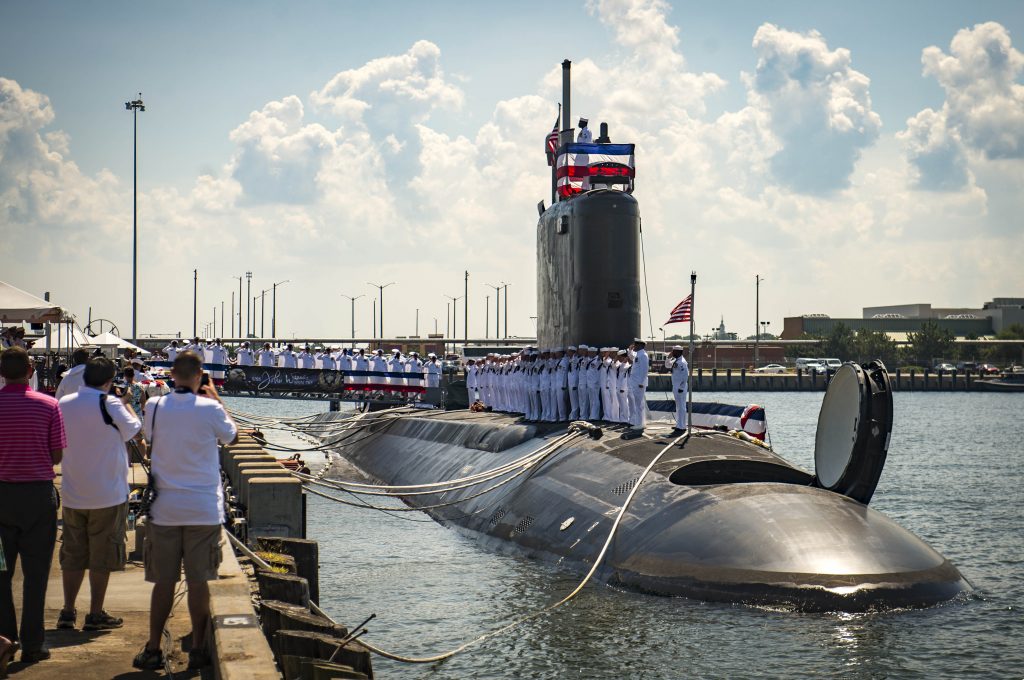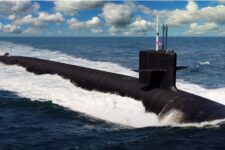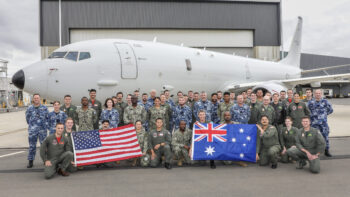
USS Shiloh, a Navy Aegis cruiser, in drydock for maintenance.
THE PENTAGON: We don’t know who it will be yet but the Navy is creating a new position, deputy assistant secretary for sustainment, to make sure more ships are fitted out and ready to leave port on time after they come in for repairs.
Last year, only 16 percent of the Navy’s workhorse guided missile destroyer fleet managed to get through planned repairs on time. Those slippages have forced combatant commanders to keep tired crews and worn-out ships on patrol for longer periods of time. Those extended deployments on patched-together ships in many ways helped set the conditions that led to accidents like the twin tragedies in 2017 that saw the USS John S. McCain and USS Fitzgerald collide with commercial ships, leaving 17 sailors dead.
While Navy officials insist the backlog is improving, the new deputy assistant secretary for sustainment will be tasked with keeping that trend heading in the right direction. Navy acquisition chief James Geurts told reporters in his Pentagon office Friday afternoon he envisions the new office working as the “synchronizer” between the service’s logistics, maintenance, research and development, and sustainment arms, keeping the various offices moving in the same direction.
“Where there are opportunities or things we need to do here at the secretariat level, this will make sure the sustainment functions throughout the Navy and the Marine Corps have an advocate and can help accelerate those,” he said. The idea is to draw the different back-end functions closer together “so we can ensure we’re fully leveraging all the things we’re doing in science and technology and R&D to help sustainment, taking lessons learned from sustainment into new construction so that we don’t have handoff issues there.”
Vice Adm. Tom Moore, head of Naval Sea Systems Command, added that the number of destroyers getting out of their repair availabilities on time has shot up to 40 percent this year, due partially to new contracting methods that have allowed shipyards and industry to plan more efficiently for coming work.
“Six out of the next eight DDGs will be one time so we’re headed in the right direction there,” Moore said, chalking up the better performance to a closer discussion between maintainers, the defense industry, and fleet commanders, along with a push to give industry more lead time to prepare for when ships would come in to dock.
Until recently, shipyards did not know from one ship availability to the next if they would win the contract for repair work, meaning they would wait to hire workers until they received a contract and a ship was ready to pull in.

Virginia-class submarine USS John Warner at commissioning with the new Virginia Payload Module on display. US Navy photo
“What we found was, industry was reluctant to hire so their hiring always lagged behind the work,” Moore said. “The other piece was, the fleet would give us a deployment schedule, and we would then build the maintenance schedules to exactly meet that, and then we would look at the workload of the port and often see that it was completely overloaded.”
The solution to smoothing over these tensions was to have deeper conversations with fleet commanders about schedules and where to do the work, rather than just plugging in data and trying to smooth it out later. This has created a more free-flowing discussion between the operational commanders and the maintainers and logistics arm of the service about what is possible, and what kind of work to do and where.
Thanks in part to the new fixed-price contracts the Navy is awarding, “if you win, you’re going to win availabilities over a 2 to 4 year period head-to-toe, so you can then go and make capital investments, and you can hire,” Moore said.
The moves have given shipyards better visibility over work schedules. Over the past three years, employment at shipyards has risen from 33,800 to 36,100.
The push to turn ships around more quickly isn’t just to keep fleet and combatant commanders happy; it’s a key part in the Navy’s plan to reach its goal of a 355-ship fleet in the next several decades. Budget realities being what they are, it’s just not possible for the service to simply build its way to 355. Instead, the admirals have long recognized they’ll have to extend the lives of dozens of ships — and do so at a time when shipyard space and capacity are already stretched.
As Geurts pointed out, the service is about to kick off “a generational-level of submarine work,” building new Columbia-class subs and performing major upgrade work on existing Virginia-class boats at the same time. The two programs share a single industrial base, and their interwoven schedules present a difficult logistical issue for the Navy as, beginning in the early 2020s, plans call for shipbuilders to churn out one Columbia and two to three Virginia subs per year.
Those builds come as the Navy is also building two more Ford-class aircraft carriers, and deciding how it can also begin building a new class of frigates, and a number of large unmanned vessels. There’s a lot of shipbuilding to be done in the coming years, but there’s also work to be completed to ensure that those ships can be equipped and repaired on time, and on budget.
Navy is down $1B in munitions from ops in Red Sea, says SECNAV
The dollar figure from the secretary comes as Speaker of the House Rep. Mike Johnson said he is ready to bring the supplemental funding bill the Navy needs passed to the floor for a vote.


























